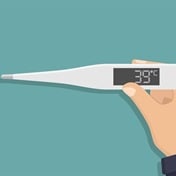
The most important part of testing any organ, is the test of how well the organ works. So, when it comes to the eye, we need to assess how well the eye sees.
This function is known as the visual acuity, or sharpness of vision.
For over one hundred years, various charts have been in use for this purpose, and the most commonly used one is the Snellen chart. It was designed by Herman Smelled, a Dutch ophthalmologist.
What is the Snellen chart?
The test is based on what a person with normal vision can read or identify at a distance of 20 feet.Why 20 feet? Because the light rays emanating from an object at this distance are parallel, and do not require refraction, or bending by the eye, in order to come to a focus on the retina. In order to focus on an object closer than 20 feet, the eye has to adjust the rays, and the closer the object or letter, the more adjustment is necessary.
So testing at 20 feet is the equivalent to testing at any greater distance, or infinity.
This chart is familiar to most people with its 10 rows of letters. The letters on each line become progressively smaller than those on the line above it. And, because not everyone is able to read, there are other charts, on which there are numbers, or for very young children, there are pictures of easily identifiable objects or toys.
How is it used?
The chart may be hung on a wall, or it may be projected onto a screen, so long as certain key requirements are met.The chart must be exactly 20 feet from the patient's eye, and the letters must be exactly the correct size on each line.
Each line on the chart has a designated number, ranging from 200 for the largest letter on the top line, to 20, or even 10, for the lower lines.
Although the 20 line is accepted as the line of normal vision, it happens that some people have super vision, and this is why numbers lower than 20 are used.
While we all recognise 20/20 as normal vision, these people will be able to see 20/10.
More on the numbers
However, the best vision is found in birds of prey. Although their eyes are much smaller, the eyes are packed with more sensors, and thus their eyes are about eight times more sensitive than the human eye - about 20/2.The patient reads the chart as far down as possible and should they reach the 20 line, we say that that person has 20/20 vision.
Should the eye only see as far down as the 40 line, [20/40], this means that in order for that eye to see the letter that the normal eye saw at 20 feet, the letter will have to be twice as large. So this vision is less acute.
Similarly, 20/200 vision, means that this eye sees at 20 feet what the normal eye can see at 200 feet.
South Africa also uses the metric system. Here the letters are six metres away, and normal vision is 6/6 - the equivalent of 20/20.
What can be done?
When the acuity has been assessed, and if the vision is below par, the examiner will attempt to normalise the vision using lenses, while the patient continues to re-read the chart. The end point is reached when the patient can see no better, using the appropriate lenses, if any. The visual acuity is recorded at that line.Lenses may correct most of the common refractive errors, such as far- sightedness, near-sightedness, or astigmatism.
If the natural vision is significantly defective (less than 20/20), the practitioner will prescribe the appropriate spectacles that enable the patient to achieve the 20/20 level, taking into account that many people , especially older ones , may function perfectly well with vision less than 20/20.
And of course visual acuity is just one part of what goes into making up the sense of sight. Good eye co-ordination, depth perception, colour vision and peripheral vision are all very important as well.
If the vision cannot be normalised with lenses, the next part of the exanimation is aimed at locating the cause of the problem, which may lie in any other part of the eye or brain. We will always try to answer the question: why does this eye not see 20/20?
Preparation before the test
No special preparation is necessary before a first test of visual acuity, but is always helpful, to take along any glasses that you use, making it easier for the practitioner to measure any changes that have occurred.Some people are apprehensive about having an eye test, but the procedure is usually quick and quite comfortable. And since there is no physical contact with the eye, there are no risks attached.




 Publications
Publications
 Partners
Partners















